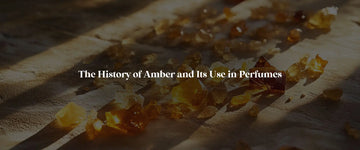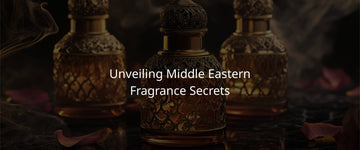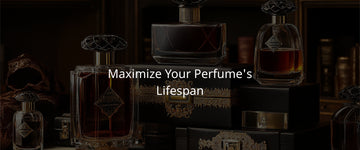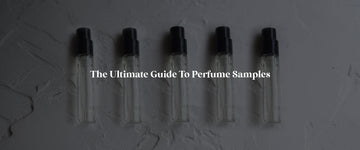“Amber notes are warm, and can evoke liquor. But above all, they give depth and sexiness to the fragrance.” Alienor Massenet, Perfumer
Known for its warmth, deep, and sexy appeal, Amber has been on the list of the perfumers for so long. Spotting a prominent position in the world of perfumery, amber as a scent debuted in the 1800s with the commencement of synthetic vanilla. Evidence of its use in perfumery in various civilisations speaks volumes of its long lasting aroma and unique depth.
This article exclusively talks about amber, its history, the trace across various civilisations, and use in perfumes. However, before we navigate to the history, we’d like to clear the confusion between amber and ambergris to facilitate a comprehensive understanding of amber, the scent.
Amber Vs. Ambergris: Clearing the Confusion
Amber or Ambergris? This is found to be one of the most common misconceptions about amber’s use in perfumes. The Interesting fact is that both sound similar and share the common characteristic of a warm and rich scent, but are entirely different substances.
Amber or Amber AccordAmber is a “fantasy” note in perfumery. It doesn’t come directly from the natural amber, which is a fossilized resin of ancient trees. This instead, is a blend of ingredients like labdanum, benzoin, and vanilla. Together, in a harmonious blend, these ingredients create a warm, resinous fragrance that evoke the sensuality of amber.
Ambergris or Gray AmberOn the contrary, Ambergris is a by-product of sperm whales. It is produced in the sperm whales’ digestive system and is often found floating on the sea. Valued for its rarity and distinctive scent, ambergris adds a musky, erotic quality to perfumes.
Ancient Beginnings of Amber in Perfumery
Egyptian Influence
Amber-like scents have been found in use since ancient times, with one of its earliest known uses in ancient Egypt. The Egyptians were the pioneers of perfumery, blending resins, herbs, and oil to create complex fragrances.
Amber’s connection to the sacred and divine played a significant role in Egyptian rituals. Burned as incense, the resins were believed to purify the air, connect with gods, and facilitate meditation and relaxation.
These early practices contributed a lot to the current status of amber in modern perfumery.
Middle Eastern Contributions
Middle East and intense perfumes are a match made in heaven. This geographical entity holds a significant place in the history of amber perfumes. Ancient civilizations in the region such as Babylonians and Sumerians used resins for religious and medicinal purposes. As trade routes expanded, fragrant materials like amber found their way into the region's booming perfume industry.
Amber then became synonymous with spirituality and luxury in Middle Eastern culture and perfumery. Its warm, sweet, and slightly spicy scent was often associated with desert plants that yielded aromatic resins, revered for their healing and protective qualities.
Besides being used as a luxury, these resins were also burned in religious ceremonies for the sake of purity and creating a serene environment.
Crafting Amber Perfumes in the Middle East in The Older TimesAmber perfumes in the Middle East were crafted using complex recipes, which were passed down to generations. Blends of benzoin, Labdanum, and Vanilla were carefully and precisely mixed with spices, woods, and floral notes. This resulted in the creation of rich, enveloping fragrances that embodied the essence of the region’s culture.
Amber in Modern Perfumery
Amber made its official debut in the modern perfume industry in the late 19th and early 20th centuries with advancements in synthetic chemistry. The development of synthetic Vanilla and other relevant ingredients enabled the perfumers to create amberscent without relying on the natural resources.
Amber made its official debut in modern perfumery during the late 19th and early 20th centuries, thanks to advances in synthetic chemistry. The development of synthetic vanilla (vanillin) and other related compounds enabled perfumers to create the amber scent without relying on natural amber.
Shalimar by Guerlain, created in 1925 is a famous perfume, or precisely a trademark in the amber category of perfumes. This iconic fragrance set the standard for amber perfumes, blending vanilla, benzoin, and labdanum to create a rich, oriental scent.
Chemistry of the Modern Amber PerfumeThe modern art involved blending labdanum, benzoin, vanilla, and oftenly tonka bean or Peru balsam. This precise and thoughtful blending resulted in the scent that the world now recognizes by the name Amber.
Often used as a base note, amber provides a strong foundation for other fragrance notes to build upon. When combined with ingredients like sandalwood, patchouli, or musk, amber perfumes evoke a sense of luxury and sophistication that is hard to resist.
Though natural amber is rare and expensive, synthetic amber molecules allow perfumers to create a wide variety of fragrances that maintain the allure of amber while offering creative flexibility. These synthetic notes capture the essence of amber’s warm, resinous, and slightly spicy character, giving perfumers the tools to craft complex and captivating scents.
ConclusionAmber’s journey in perfumery is a story of evolution, starting from its use in the early Egyptian civilization. Making its way through the Middle Eastern Era, Amber finally landed in the modern era, and ruled the perfumery industry like a STAR.
The resin from baltic trees gained popularity for its warm, deep, sensual, and slightly sweet aroma. Thanks to synthetic amber for making it easy for the perfumers to blend a variety of spices, woods, and floral notes to create exotic perfumes.
The history and origin of amber is rich and complex and will be hailed forever. There are other fragrances giving tough competition to amber, but one thing that’s certain is amber’s enchanting presence in perfumery. And that’s definitely here to stay.





